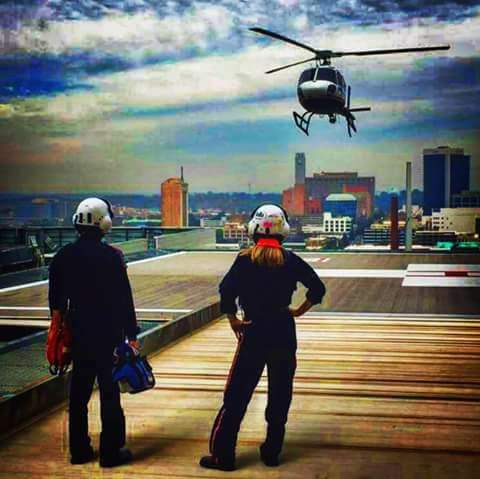 |
| Image courtesy Australian Transport Safety Board |
About 10 years ago, I corresponded with my chief pilot at Omniflight Helicopters, Mr. Eric Pangburn, about the aircraft at my base "surging" nose-up in cruise flight. It was not a violent pitch up, rather it was a smooth and steady pitch up that was overcome with a reduction of collective and forward cyclic. It was disconcerting and I wanted to know why it was happening.
The phenomenon was also experienced by another pilot at my base, Mr. Tim Lilley. Our experiences were similar and in the same aircraft, N171MU a BK-117A4. These events were not "high and hot" but occurred near sea level and moderate temps.
Eric included his friend Shawn Coyle, a well-known helicopter expert, and writer, in our discussion, and Mr. Coyle added his thoughts - to wit that erosion of the leading edge of blades might reduce the margin to RBS. The answer: ease up and slow down.
A pilot-friend at another base, Mr. Mike Sharp (now deceased) had experienced an RBS loss of control event prior to our events. Mike was operating a BK-117A4 N117LS and in his case, he was high, it was hot, and the aircraft was heavy. He mentioned noticing that he was near the "haze line" in the atmosphere, with clear cooler air above the level of the haze and warmer "muggier" air below. As he descended the aircraft snapped up violently - similar to the event described in the linked report from the Australian Transport Safety Board. First a pitch up to near vertical, then a flopping over to a dive straight down. The medical crew became weightless in flight and came out of their seats. (Mr. Don Lamb and Mrs. Robbin Perry)
I recommend you imagine yourselves in this crews seats as you read this report. Imagine the dismay they must have felt and consider their responses, determine if you would respond in the same way or would do something differently. I also respectfully recommend that pilots avoid pitching over on the nose by way of accelerating in the dive. Since the recommended recovery for RBS is to lower the collective, lowering collective to descend should help prevent the occurrence. Mentally rehearse, prepare, and if possible prevent - this crew missed dying by a relatively small margin.
I have no data to back up the following assumption, but I imagine that a BK117, EC-135, or EC-145 might be similarly susceptible to this problem because of their rotor systems. If you have experience with RBS, please share what you have learned in a comment.
May you have safe flights and may you avoid a "soil-the-pants" situation.
Dan Foulds
HelicopterEMS.com
"Shortly after 1400 Central Daylight-saving Time, a ‘violent’, uncommanded nose-up pitching of the helicopter occurred. The pilot instinctively applied full forward cyclic control, but using both hands given the severity of the pitch-up, in an attempt to regain control but was unable to arrest the continuing nose-up pitch. At about 70° nose-up the helicopter rolled left through approximately 120° and commenced a steep descent. On seeing the ground through the windscreen, the pilot applied full rearward cyclic, which resulted in the helicopter pulling out of its now near vertical nose-down attitude and levelling off at about 1,000 ft (about 800 ft above ground level)."
Click here to access the Australian Transport Safety Board report.
